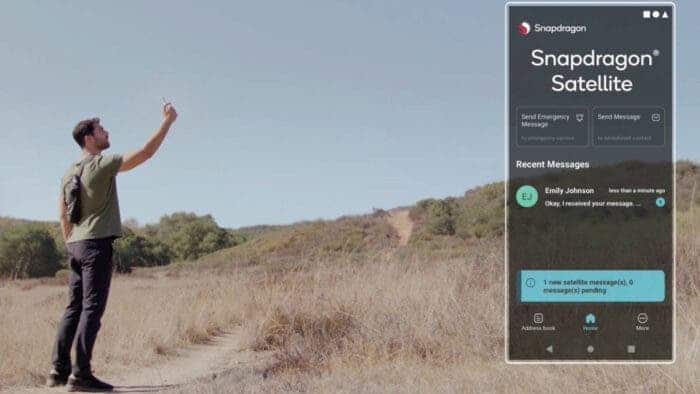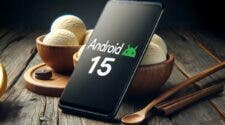The majority of smartphones with Snapdragon 8 Gen 2 processors will become satellite emergency message devices thanks to Qualcomm and Iridium’s collaboration. If the approach resembles that of Apple, integrated into the iPhone 14, the choice of satellite partner could give an advantage to Qualcomm.
You can communicate from anywhere in the world if you can see even a small patch of sky. Francesco Grilli, the Qualcomm vice president in charge of satellite technologies, has made this commitment. He demonstrated how this technology would soon be available in Android smartphones at CES 2023. Thereby responding to Apple. Which in September 2022 with the release of its iPhone 14 launched the era of emergency satellite communication.
If Qualcomm trails Apple in the race, it is primarily due to Qualcomm’s later debut date for processors. Qualcomm typically introduces its SoCs at the end of the year. However, Qualcomm’s “delay” primarily pertains to the software rollout and launch of the services. The vast majority of high end Android devices this year that incorporate Snapdragon 8 Gen 2 CPUs are already compatible. But the choice of the satellite partner sets Qualcomm’s technology apart from Apple’s in a significant way.
The satellites connection of Android smartphones will be much better than iPhone
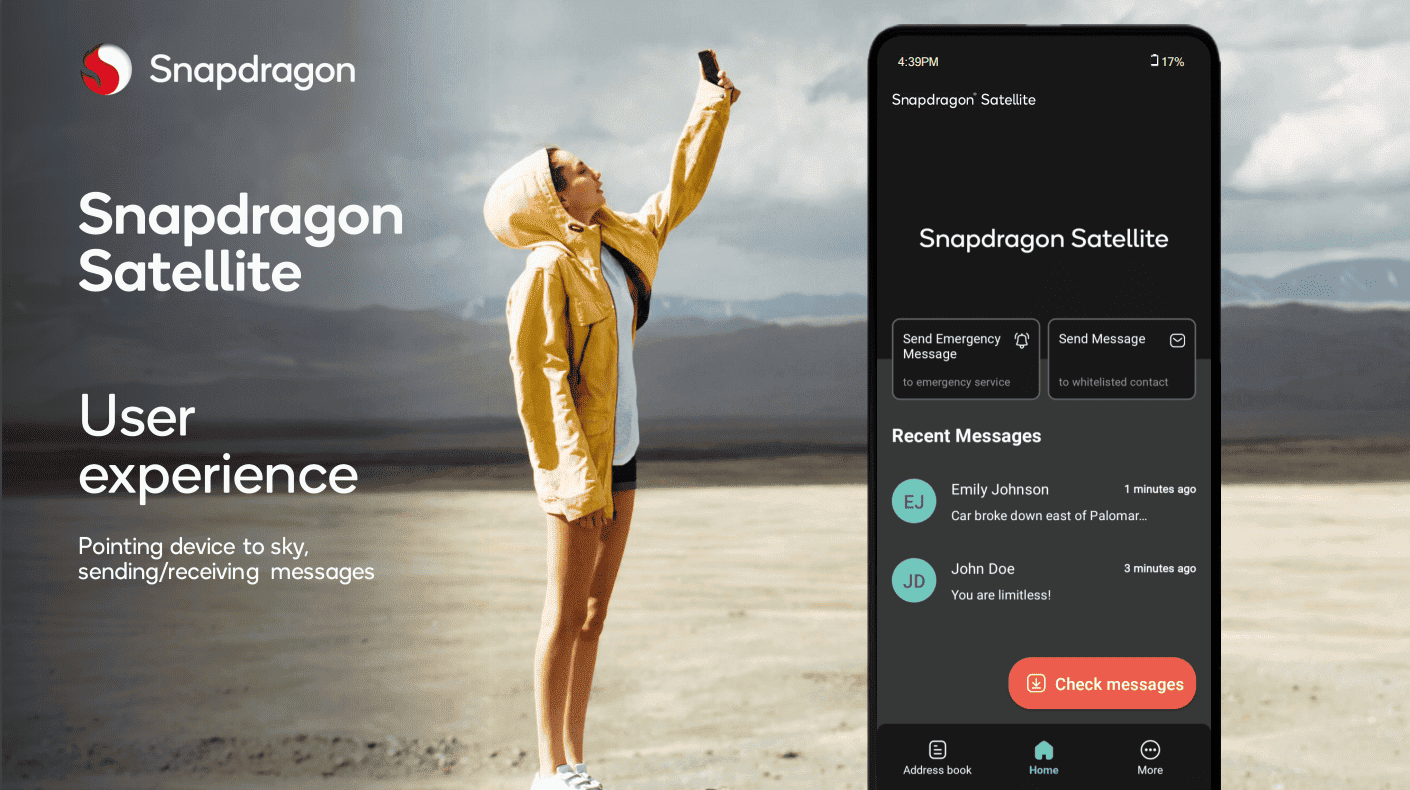
In contrast to Apple, who contracted with Globalsat, Qualcomm turned to American Iridium, another satellite expert. Who is unquestionably the field’s heavyweight in the industry. Most people who work in fields that need them to think creatively outside the box, such as mountaineers, humanitarians, explorers, journalists covering armed conflicts, and government officials, are likely to have a satellite phone. It is often an Iridium-based device because of this network’s main strength: its global reach.
A device compatible with the Iridium network can successfully send and receive messages from the North Pole to Point Nemo in the Pacific Ocean as soon as a patch of sky is available – bidirectionality which will also be on the agenda with smartphones. The Globalsat network is not like that. The two networks’ technical architecture is to blame for this. Iridium is a constellation with inter satellite communications. Whereas Globalsat relies on ground relays (there are several dozen on the earth).
Additionally, Iridium has more satellites orbiting at lower altitudes (66 + 9 backup vs. 24 for Globalstar). Making it easier to communicate even in the deepest valleys or gorges, where Globalsat will have considerably more difficulties. Notably, this does not rule out Apple’s proposal. Whose service is already ideal for sporadic usage in the heart of the Atacama Desert. Finally, if the service were established in Chile. However, the most intrepid explorers will invariably select Iridium over Globalsat.
Sattelite connection will be available for all Qualcomm smartphones
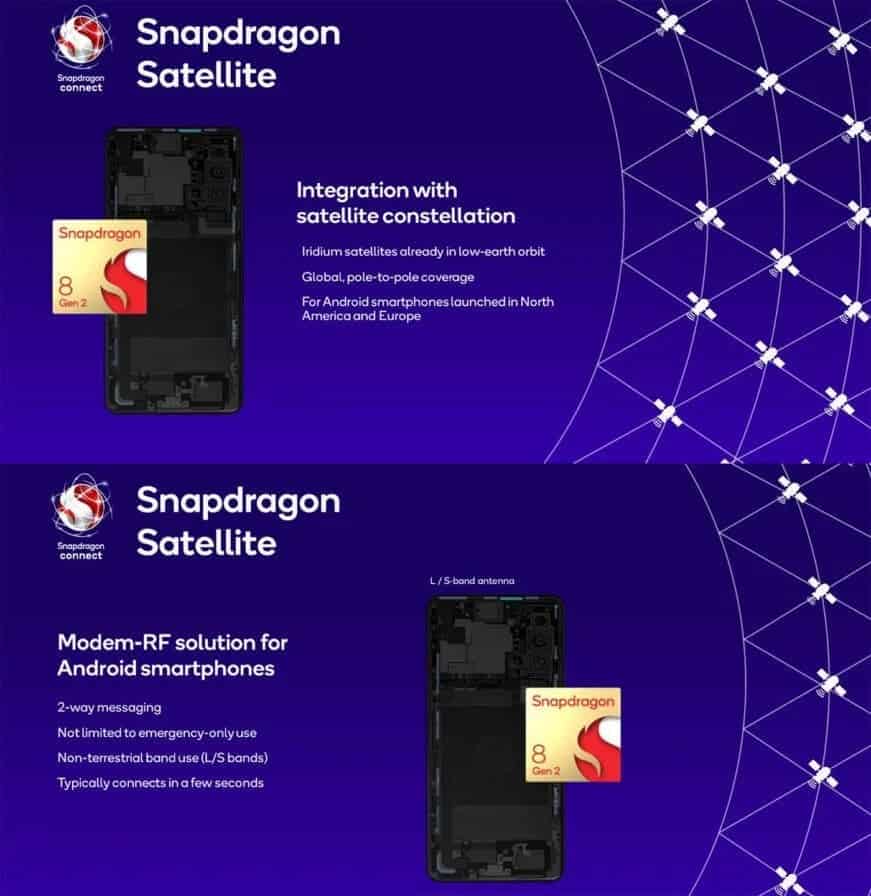
The good news is that high end Android devices should be completely compatible with satellite connections this year. Which is great for anyone who plan to purchase one. However, it is subject to both technical and legal limitations. For the device to use the service, Francesco Grilli says that it must use our most recent RF antennas. This won’t be achievable if a company opts for a different service provider. Because the X70 Snapdragon 8 Gen 2 modem requires these antennas. Although it’s uncommon, brands occasionally choose not to purchase the entire tech stack. Due to the lack of technical details regarding the RF antenna type used. It will be challenging to simply validate the information!
The law of the country where the smartphone was purchased must then permit this kind of use. “Satellite services are not allowed in nations like China or India. You won’t be able to benefit from it because of local law. However, it will be possible for all compatible devices bought in North America or Europe. And they will function wherever on Earth,” Mr. Grilli continued. Qualcomm appears to have some technological advantages on paper. Apple, as is the case so often, has a few tricks under its sleeve.
Strengths of Apple: integration and investments
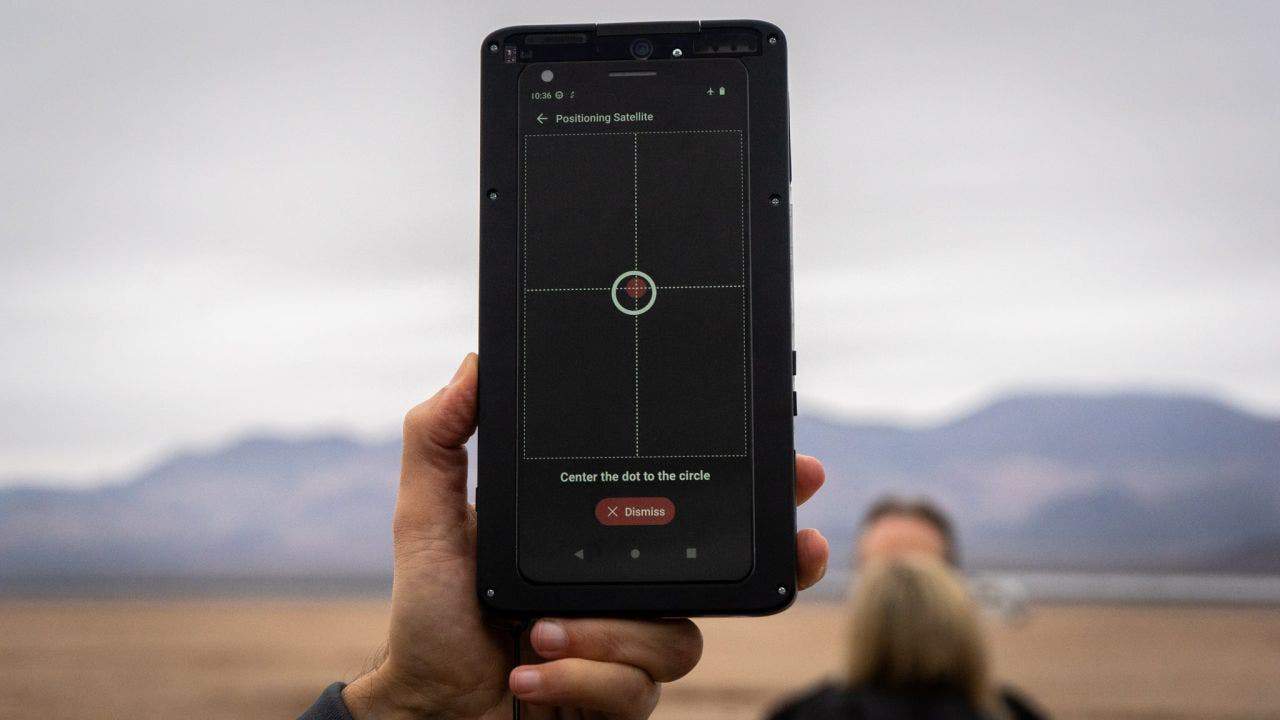
As we’ve seen, Globalstar does not provide the same level of comprehensive coverage as Iridium. The network is secondly dependent on a small number of ground stations. Because the satellite industry, which includes Iridium, Inmarsat, Globalstar, and Thuraya, is small and doesn’t produce much revenue. Without the “debauchery” side that an actor like Space X can portray, all launches are controlled. Apple is completely aware of everything. Without a doubt, this is the reason the American giant has chosen to improve the network. By digging further into its pockets.
Therefore, since the release of the iPhone 14, Apple has been quite insistent in its marketing about the feature. To discuss its investment in the system. Thus, the Americans will invest 450 million dollars over the course of five years to strengthen the ground station network. In the beginning in the states of Hawaii, Alaska, Florida, Nevada, or Puerto Rico in the United States (first market where the service was deployed). Since so few people actually require Iridium’s global coverage, many American states continue to be sparsely populated, untamed, and occasionally lacking in adequate network infrastructure. Thus, it appears that Apple’s answer is already appropriate for a larger audience.
Last but not least, Apple will also stand out on the integration side. Because the service is (as usual with Apple! ), planned out from A to Z. The ease of signing up for a protection plan when the time comes. Right now it’s free for two years, and time will tell what Apple has chosen, etc. Pre-recorded messages in the terminal (which automatically encompass GPS position) to software integration, etc. The American has everything set up already.
Qualcomm’s Android partners will need to start from scratch to develop not only a software offer. But also a technical and commercial offer that is tailored to each country. Where the devices are sold if they want to compete with Apple. The Achilles heel of Android devices is typically their finishes. Hope Qualcomm has already set the stage for its partners; if not. It will likely be necessary to wait a little while for its solution. Which is superior in terms of space, to truly challenge Apple’s.

